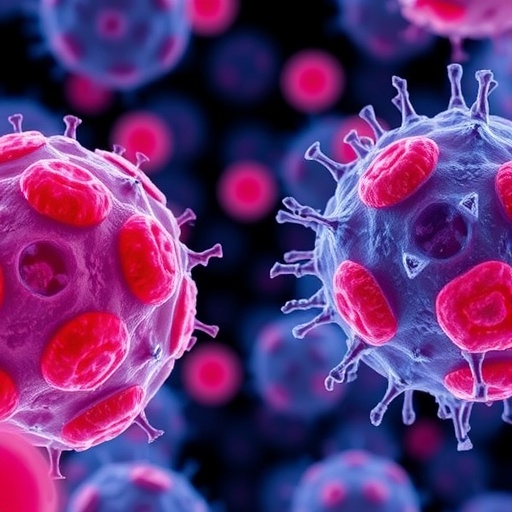Brussels, 6 August 2018 : The genetic screening of fertilised eggs for embryo selection in assisted reproduction makes no difference to live birth rates, according to results from the largest published study of its kind. Results from this multicentre randomised controlled trial are reported today in the journal Human Reproduction (1) and, say the authors, confirm the "widely accepted" view that preimplantation genetic testing for chromosome abnormality (PGT-A) will not increase live birth rates in IVF.(2)
The study, which recruited its first patients in 2012, was performed in 396 women of "advanced maternal age" (aged between 36 and 40), a patient group considered likely to benefit from preimplantation genetic testing by chromosome screening. The women, treated in nine centres in seven countries, were randomly allocated to PGT-A (205 subjects) or no PGT-A (thus, a control group of 191 subjects).
Results of the study showed that up to one year after randomisation and after a first cycle of treatment 24% of the PGT-A group had had a baby, and 24% of the control group. This – measured as "cumulative live birth rate" – was the study's primary endpoint. There was a difference, however, in the miscarriage rate (a secondary endpoint) between the two groups: significantly fewer subjects with a miscarriage in the PGT-A group than in the control group (7% versus 14%).
The similarity in live birth rates was not only achieved with fewer miscarriages in the PGT-A group, but also with fewer embryo transfers (and fewer double embryo transfers, as the protocol allowed). This, say the authors, would point to "a greater efficiency of transfers with PGT-A", even if not an improvement in live birth rate. However, they add, "it remains to be seen" whether this benefit of efficiency and reduced miscarriage risk are sufficient to outweigh the drawbacks of cost and an invasive procedure in PGT-A.
It is now 20 years since first reports suggested an increased pregnancy rate from embryos screened for chromosomal abnormality, and since then the practice has continued to prove controversial. The early forms of testing – when the procedure was known as preimplantation genetic screening (PGS) – were limited by the small number of chromosomes in the analysis. This problem was later resolved by technologies which allowed "comprehensive chromosome screening", and thus the detection of abnormality in any of the full complement of 23 chromosomes.
The study reporting today also analysed a full complement of chromosomes, as found in the two polar bodies of recently collected eggs fertilised by ICSI. Polar bodies are the first non-functional "by-product" cells found in the egg as it prepares for its first division after fertilisation. Although the two extruded polar bodies contain only genetic material of maternal origin, they do reflect the chromosomal content of the egg, which accounts for 90% of all chromosomal errors found in fetuses and live births.(3)
The study's principal investigator, Professor Karen Sermon from the Research Group Reproduction and Genetics of the Vrije Universiteit Brussel (VUB) in Belgium, explained that embryo biopsy for embryo selection was not allowed in two of the study countries at the time (Germany and Italy) and that anyway polar body biopsy was perceived as less invasive.
She described the results as "extremely robust", noting the large number of subjects and rigorous multicentre study design. She added that the results, although derived from polar body analysis, could confidently be extrapolated to other techniques of PGT-A in this patient population (women of advanced maternal age). "There is now a growing consensus that the most important chromosomal abnormalities interfering with implantation are of meiotic origin – that is, they are derived from the egg or the sperm," she explained.
Commenting on the trial's findings, Professor Sermon "saw no benefit" of now offering PGT-A to the patient population of this study, especially in cases where only few eggs have been retrieved. She advised that similarly rigorous trials should now be performed in other patient groups.
Otherwise, the benefits of PGT from this trial are confined to fewer miscarriages and fewer treatment cycles, which, said Professor Sermon, "may still tip the controversy scale in favour of PGT-A". But these benefits, she added, must still be balanced by the cost of PGT-A and the invasive nature of the procedure.
Chromosome screening in assisted reproduction
1. Following a pilot study, the ESHRE Study into the Evaluation of oocyte Euploidy by Microarray analysis (ESTEEM) was started in 2012. The study was financially supported by the European Society of Human Reproduction and Embryology (ESHRE).
2. The rationale for the chromosomal testing of embryos before transfer was (and remains) the undisputed fact that the prevalence of chromosomal abnormality (aneuploidy) in embryos increases dramatically with female age, and is recognised as the principal reason for miscarriage and some genetic disorders (such as Down syndrome), rates of which both increase with advancing age. In the ESTEEM trial, for example, in a study population of advanced maternal age, 525 out of 811 eggs analysed (65%) were found to be aneuploid. This rate is consistent with aneuploidy rates found in other studies.
3. Current PGT-A practice, as the ESTEEM investigators acknowledge, is not by analysis at the very early stage of polar body extrusion, but at the later blastocyst (five-day) stage of embryo development, when a small cluster of surface cells are removed by biopsy for testing. The technology of PGT-A has now moved through three phases of analysis but its benefit as an adjuvant treatment in IVF has remained controversial, mainly because the weight of evidence in support of improving delivery rates is still considered questionable.
###
* When obtaining outside comment, journalists are requested to ensure that their contacts are aware of the embargo on this release.
For further information on the details of this press release, and a PDF copy of the full paper, please contact:
Christine Bauquis at ESHRE
Mobile: +32 (0)499 25 80 46
Email: [email protected]
Media Contact
Christine Bauquis
[email protected]
32-499-258-046
@ESHRE
https://www.eshre.eu/
http://dx.doi.org/10.1093/humrep/dey262




